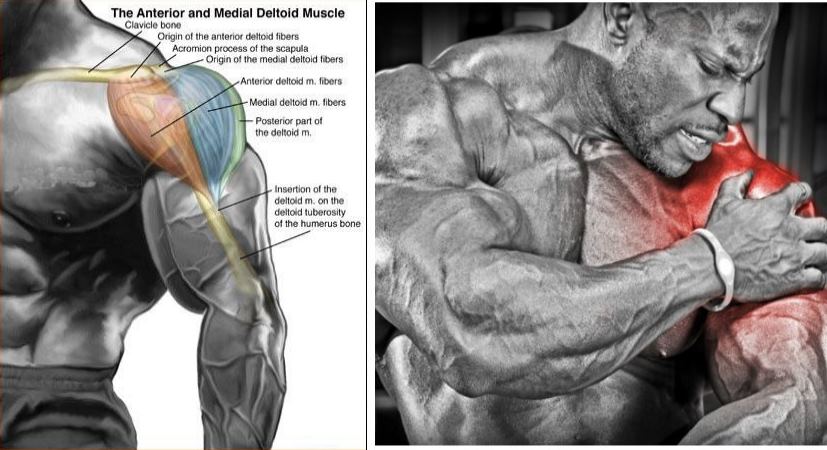The majority of cases related to shoulder pain are largely caused by rotator cuff problems. Injuries to the rotator cuff muscle are usually related to movements which include repetitive overhead motions or sudden forceful pulling motions. A rotator cuff injury can be any type of damage or irritation to the rotator cuff tendons or the muscle itself.
What is it and how does it function?
The rotator cuff is basically a group of four muscles and their accompanying four tendons which connect your upper arm (the humerus bone) to your shoulder blade (the scapula). Their main role is to stabilize the shoulder joint. The four tendons also stabilize it.
Each of them attaches to a specific muscle which moves your shoulder in a specific direction. The muscles which comprise the rotator cuff are the subscapularis muscles, which moves your arm in an inward turning motion, known as internal rotation; the supraspinatus muscles, responsible for elevating your arm and moving it away from your body; the infraspinatus muscle, responsible for moving your arm in an outward turning motion, known as external rotation and the teres minor which is also responsible for the external rotation movement of your arm.
The rotator cuff function
The four rotator cuff muscles are essential in executing any shoulder movement as well as maintaining the stability of the shoulder joint. During arm abduction, when we’re moving it outward and away from our body, the rotator cuff compresses the glenohumeral joint, which is also known as concavity compression, so that it can allow the deltoid muscle to elevate the arm further. Without the rotator cuff, the deltoids won’t be efficient.
Common issues
1. Tearing one or more of the tendons of the rotator cuff muscles.
2. Tendonitis, an inflammation or irritation of a tendon.
3. Impingement, which happens when tendons of the rotator cuff muscles become inflamed or irritated when passing though the subacromial space, the passage under the acromion.
How to strengthen the rotator cuff
There are various different exercises you can use to engage each rotator cuff muscle like:
1. External rotations to the side which engage all four rotator cuff muscles.
Lie on your side, hold the dumbbell in the hand that’s on the top, with the elbow bent at 90 degrees.
Keeping the elbow bent, rotate your arm so that the dumbbell moves up across your chest and toward the ceiling.
Return slowly to the start position.
If you want to add resistance, use a small dumbbell. Time the execution at 2 seconds out and 4 seconds back.
2. External rotations to the top which engage the infraspinatus and the teres minor.
Sit perpendicular to the dumbbell with your arm flexed at ninety degrees at your elbow, with your forearm positioned parallel on the dumb bell. Raise the dumbbell until your forearm also points up. Lower it down slowly and repeat the movement, with both arms.
3. A lateral raise with internal rotation, which activates the supraspinatus.
With a dumbbell in each hand, rotate the arms internally, so that your thumbs point to the floor when extended, like emptying a glass into a bin. Raise both arms from your sides, while keeping the thumbs pointing downwards at all times, until the dumbbells reach just below the shoulders.
The general conclusion here is that strengthening the rotator cuff muscles will allow you to lift heavier weights in lots of other exercises.
Weight training for the rotator cuff
In order to strengthen your rotator cuff you can try the following routine which will warm up the shoulder joint before your training session:
Superset:
1. External rotations to the side – 3 sets of 25-30 repetitions
2. External rotations to the top – 3 sets of 25-30 repetitions
You can start this superset with no weight at first, then slowly introduce bands for some slight resistance, and at last use dumbbells. You should always warm-up the rotator cuff before doing any type of weight training which involves shoulder movements like shoulder, chest or back workout.
If you’re experiencing rotator cuff issues, you should absolutely avoid all exercises which you cannot perform with a proper form without experiencing some type of shoulder pain. The most common examples are any incline or flat pressing movements, military press, push-ups, pulling movements and exercises performed behind the head.
Nutrition for healthy rotator cuffs
The same nutrition rules apply here as for any other muscle group. Always choose healthy fats like fish oil, extra virgin olive oil, flaxseed oil, walnuts, almonds, cashews, hazelnuts, avocado, any type of fish etc. If you want to rehabilitate shoulder injuries as fast as possible and prevent any future injuries from happening, you need to strengthen the rotator cuff muscles with a variety of exercises, a healthy fat intake and take supplements which promote joint health.




